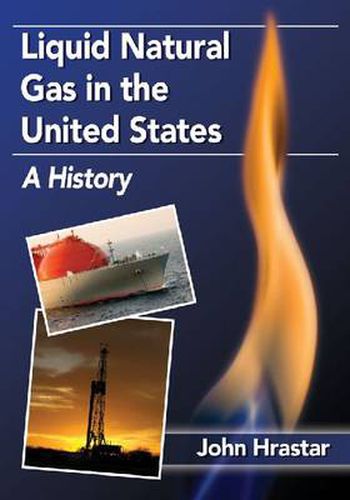Readings Newsletter
Become a Readings Member to make your shopping experience even easier.
Sign in or sign up for free!
You’re not far away from qualifying for FREE standard shipping within Australia
You’ve qualified for FREE standard shipping within Australia
The cart is loading…






When natural gas was first discovered in Appalachia in the 19th century, its development and growth as a fuel was rapid. Unlike oil and coal, however, gas could be moved only by pipeline and required large containers for storage. It was not possible to cope with peak loads without adding excessive pipeline capacity. This problem was solved just before World War II when two sister gas companies developed a plant to liquefy and store natural gas as a liquid; the liquid was then regasified to deal with peak loads.
The liquid is 1/600th the volume of the gas, but it requires storage at the extremely low temperature of -260 DegreesF. This worked well until a 1944 disaster in Cleveland when an LNG tank ruptured and caused a major fire with 130 fatalities. The fire did not end the industry but caused it to pause before resuming. Over the next few years the problems in materials, design, standards and siting were solved. The recognition that liquefaction made LNG transportable without a pipeline was the breakthrough. In 1959 a shipload of LNG went from Louisiana to Britain and restarted the LNG industry. It is now a major worldwide energy industry.
$9.00 standard shipping within Australia
FREE standard shipping within Australia for orders over $100.00
Express & International shipping calculated at checkout
When natural gas was first discovered in Appalachia in the 19th century, its development and growth as a fuel was rapid. Unlike oil and coal, however, gas could be moved only by pipeline and required large containers for storage. It was not possible to cope with peak loads without adding excessive pipeline capacity. This problem was solved just before World War II when two sister gas companies developed a plant to liquefy and store natural gas as a liquid; the liquid was then regasified to deal with peak loads.
The liquid is 1/600th the volume of the gas, but it requires storage at the extremely low temperature of -260 DegreesF. This worked well until a 1944 disaster in Cleveland when an LNG tank ruptured and caused a major fire with 130 fatalities. The fire did not end the industry but caused it to pause before resuming. Over the next few years the problems in materials, design, standards and siting were solved. The recognition that liquefaction made LNG transportable without a pipeline was the breakthrough. In 1959 a shipload of LNG went from Louisiana to Britain and restarted the LNG industry. It is now a major worldwide energy industry.